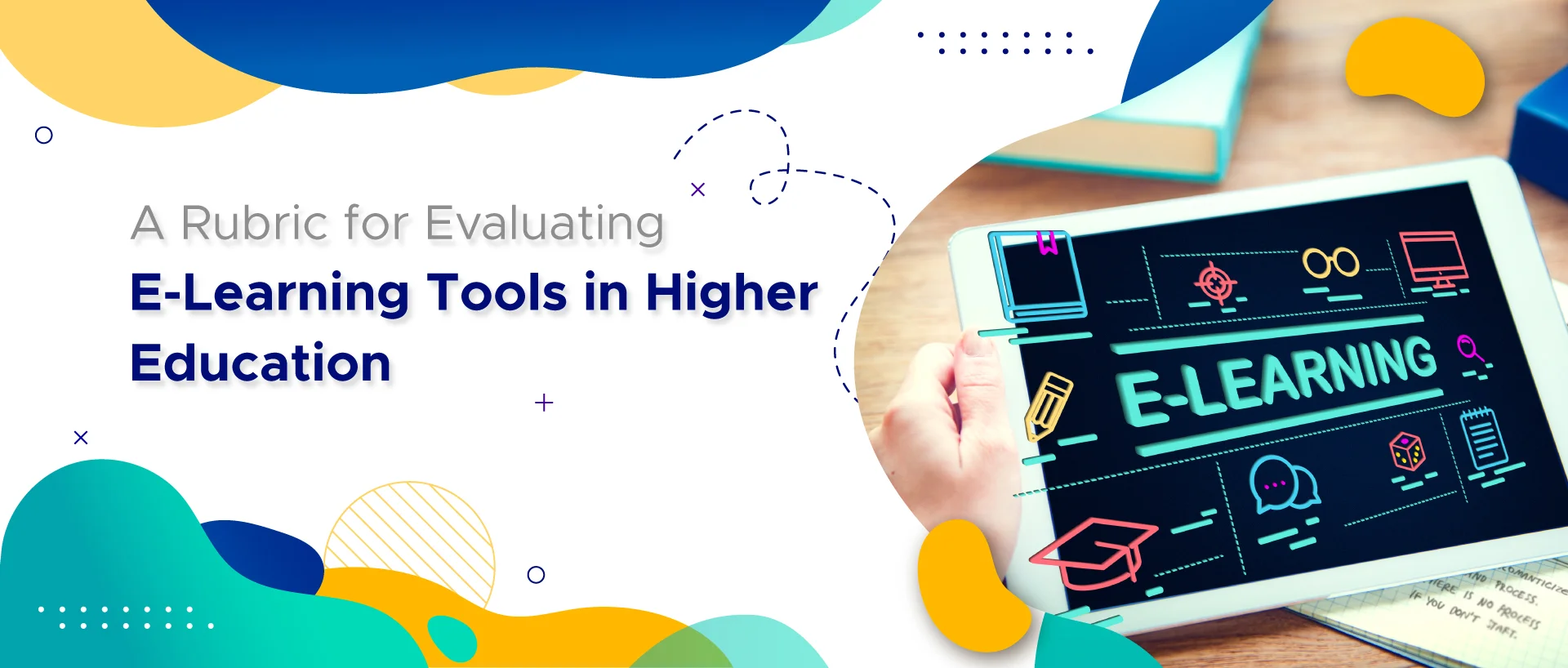
Technology integration has become a cornerstone of pedagogical advancement. E-learning tools have emerged as powerful assets for educators and students, offering innovative ways to facilitate learning experiences. However, with many available options, how can educators discern which e-learning tools suit their needs? This article introduces a comprehensive rubric for evaluating e-learning tools in higher education, shedding light on the meaning of rubrics, its importance, and elucidating how rubrics can benefit students. We aim to empower educators to make informed decisions about integrating e-learning tools into their teaching practices.
Let's first clarify a rubric in education. A rubric is a systematic and objective set of criteria to evaluate or assess a specific task or performance. It provides a structured framework for assessing the quality of work and serves as a valuable tool for educators and learners. Rubrics are widely employed in various educational settings, including K-12, higher education, and professional contexts.
In higher education, rubrics assess various activities, including assignments, projects, presentations, and discussions.
Rubrics provide clear and explicit guidelines on what is expected in a given task or assignment. This clarity helps both educators and students understand the evaluation criteria upfront.
Rubrics promote consistency in grading. When multiple educators assess the same assignment using the same rubric, it ensures that grading is fair and unbiased.
Rubrics facilitate constructive feedback by specifying areas of strength and areas that need improvement. This feedback aids students in understanding how to enhance their performance.
Students can use rubrics for self-assessment. They can gauge their work against the criteria outlined in the rubric, fostering a sense of responsibility for their learning.
As technology continues to evolve, the array of e-learning tools available to educators is expanding exponentially. While this offers exciting possibilities for enhancing the teaching and learning experience, it also presents a challenge in choosing the right tools that align with educational goals and deliver meaningful outcomes. This is where the evaluation of e-learning tools comes into play. Here are some compelling reasons why this evaluation is essential:
E-learning tools can significantly impact the quality of education. They can engage students, facilitate active learning, and enhance comprehension when chosen wisely. Conversely, using inappropriate or ineffective tools can lead to disengagement and hinder learning. Educators can make informed decisions to maximize their educational impact by evaluating these tools.
Educational institutions often have limited resources. Investing in e-learning tools without clearly understanding their effectiveness can be wasteful. Evaluation helps institutions allocate resources efficiently by identifying tools that provide the most value for the investment.
The needs of students and educators are continually evolving. What works today may not be suitable in the future. Evaluating e-learning tools allows institutions to adapt to changing educational requirements and stay at the forefront of pedagogical innovation.
Evaluating e-learning tools is essential for maintaining quality in higher education. Ensuring that tools meet specific standards and criteria helps maintain consistency and excellence in teaching and learning.
Bonus Read: Top Trends in Higher Education 2023 to Watch Out For
The rapid proliferation of e-learning tools in higher education necessitates a structured approach to assess their suitability. The following rubric outlines key dimensions for evaluating these tools:
Criteria:
Usability and user experience are fundamental aspects of any e-learning tool. A tool should be user-friendly, accessible, and capable of fostering user engagement.
Criteria:
E-learning tools facilitate the delivery of quality educational content while allowing educators the flexibility to customize materials. Interactivity and assessment integration contribute to a dynamic learning experience.
Criteria:
E-learning tools should empower educators with insights into student progress and engagement through data analytics and reporting.
Criteria:
Compatibility and integration with existing systems are critical for smoothly adopting e-learning tools. Scalability ensures the tool can grow with the institution, and robust security measures safeguard sensitive information.
Criteria:
Cost considerations are essential in higher education, and e-learning tools should align with the institution's budget. Sustainability, ROI, and ownership rights should also be taken into account.
To illustrate the practical application of the rubric for evaluating e-learning tools, let's consider examples of Rubrics in Higher Education. There are two hypothetical e-learning tools: Tool A and Tool B.
Usability and User Experience: Tool A is intuitive but lacks comprehensive user support, like a teacher lecture manual.
Based on this evaluation, Tool B is more suitable for the institution, as it aligns better with the rubric's criteria.
Let's delve into how rubrics help students. The benefits of using rubrics extend beyond educators; they also greatly assist students in their learning journey.
Evaluating e-learning tools in higher education is a multifaceted task that requires careful consideration. The rubric presented in this article provides a systematic approach to assessing these tools based on key dimensions such as usability, content delivery, data analytics, integration, and cost-effectiveness. Educators can use such a rubric to make informed decisions when selecting e-learning tools that align with their pedagogical goals and institutional needs.
Furthermore, the incorporation of rubrics in higher education not only aids educators but also empowers students by providing clear expectations, opportunities for self-assessment, and a deeper understanding of feedback. In a generation where technology persists in reshaping the education landscape, the judicious use of rubrics ensures that e-learning tools enhance the learning experience and contribute to the overall success of higher education institutions.
Share